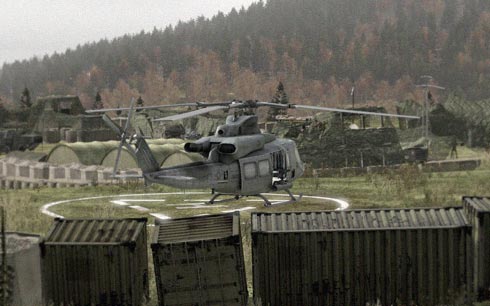
SOUTH ZAGORIA, Chernarus (AAN) – Marines in Chernarus relocate to new base camp.
The 27th MEU forces inside Chernarus reached a landmark in the liberation of Chernarus today when they relocated to a new base camp in the north of the country. This move indicates that the country is now substantially more stable after a week of gains by combined CDF and USMC forces.
The bulk of South Zagoria is now under the control of the Chernarussian Defence Force, supported by elements of the 27th MEU. Speaking for the recently elected Interim Chernarussian Government, Acting Foreign Secretary Dočasný said “We are nearing the end of the war, but the fight isn’t over. The Chedaki [a local nickname applied to ChDKZ forces] is still hiding in the woods, in the remote places, and we are to flush him out.” He continued “Thanks to our American allies our country is whole and almost healed again. We move forward together to the northern most extremes of our homeland to finish the job.”
The exact location of the new Forward Operating Base is still classified, but according to USMC reports only the far North Eastern tip of the South Zagoria province remains a significant threat.
After some hard fighting at the beginning of the week, ChDKZ forces have rapidly disintegrated in the face of combined USMC and CDF forces. Some observers have claimed the USMC push to the north has come too quickly, at the behest of a face-seeking CDF, and may in fact be a deliberate ChDKZ tactic. Acting Foreign Secretary Dočasný laughed off suggestions that the rapid ‘Chedaki’ dissolution could be a dangerous feint. “The ChDKZ are no longer a real threat” he said, “nothing can stop our victory now.”

Not everyone is so enthusiastic about the USMC arrival in the north. The region is inhabited by a largely ethnic Russian population, traditional supporters of the ChDKZ party, and many see the area as a perfect base for insurgency. The area is a hotbed of militant uprising between nationalist guerrillas and ethnic Russian ‘sotnyas’ or ‘home defence groups’. Theirs is an enmity going back long before the start of this particular conflict – in fact is seen as the root of the region’s problems – and is not thought to be solvable by military force alone, USMC or otherwise.
